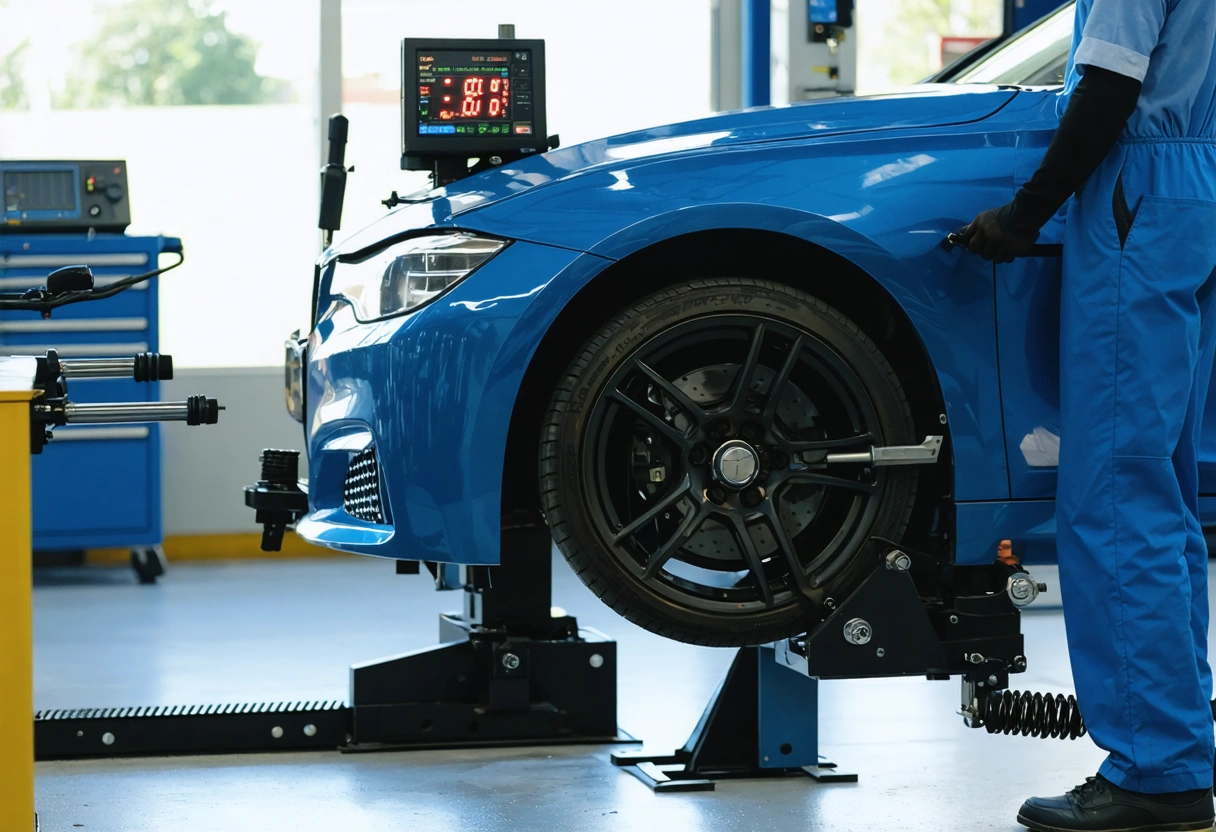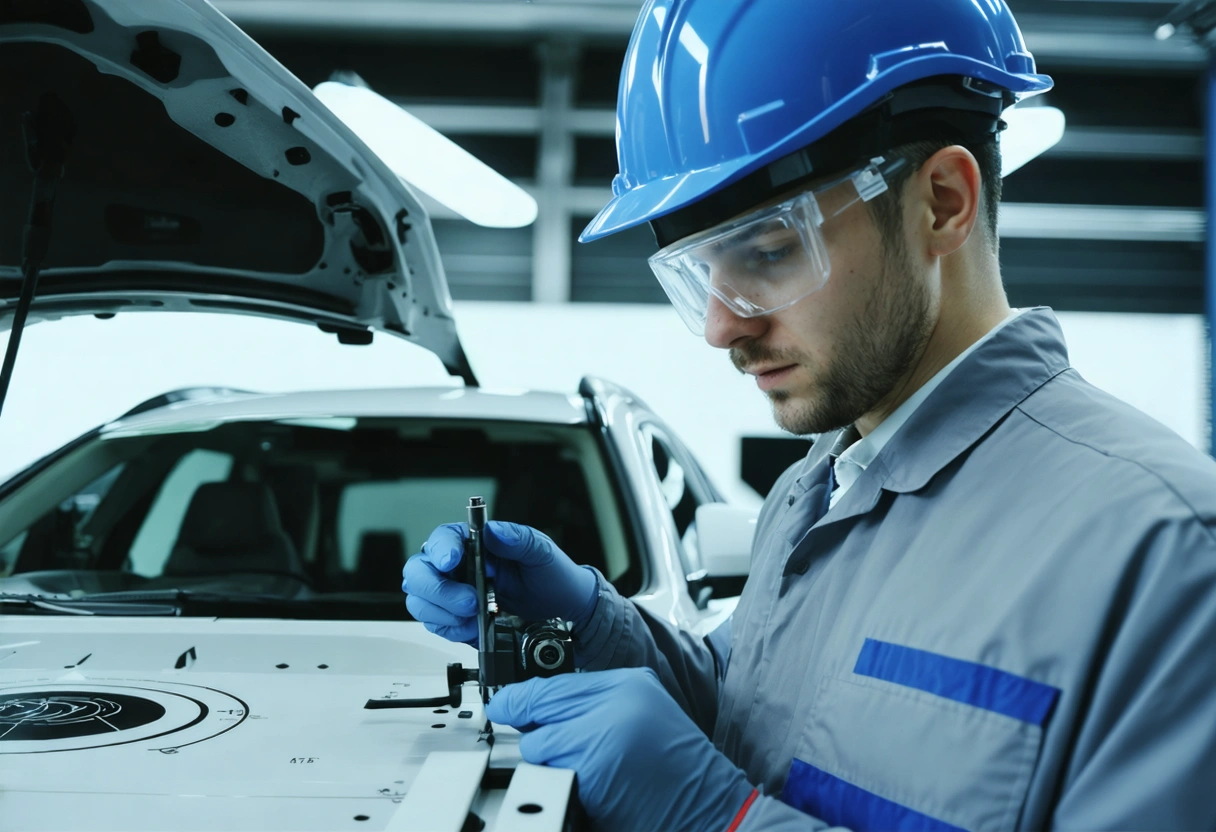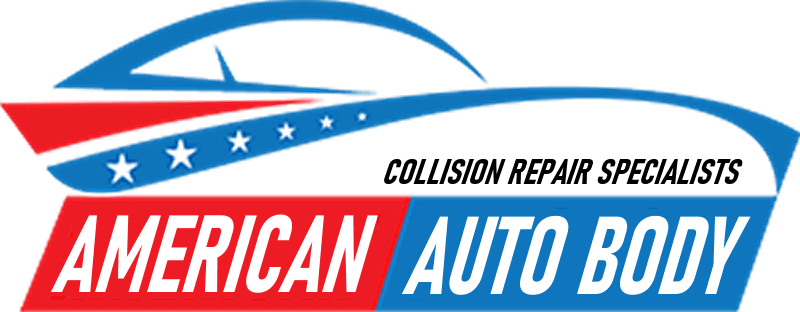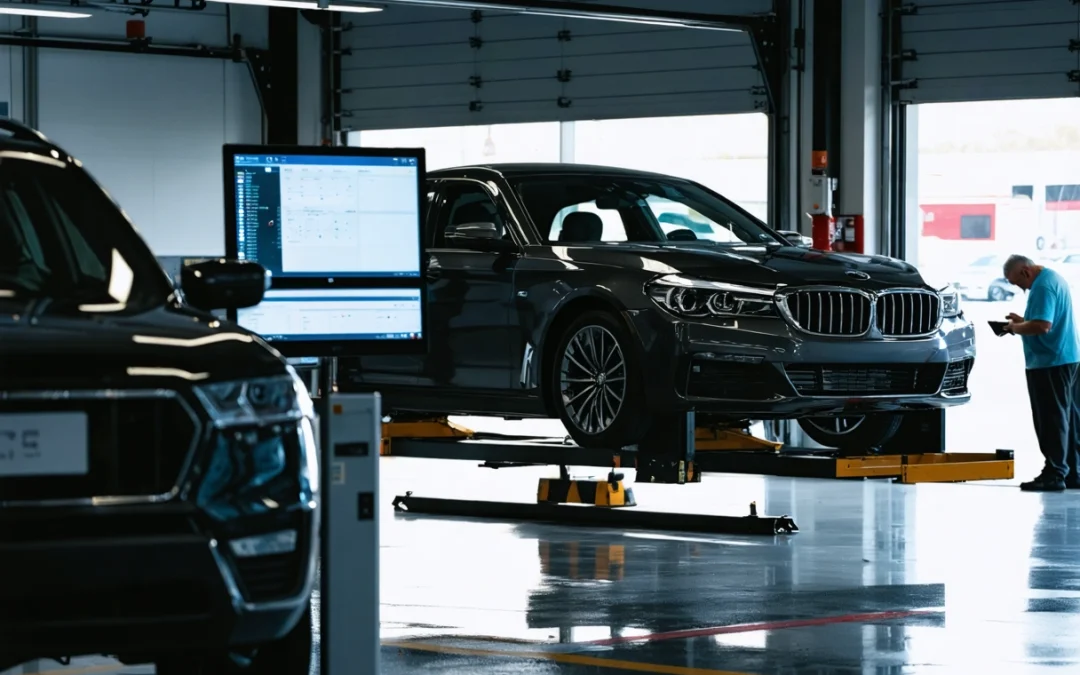Understanding the Importance of Wheel Alignment & ADAS Services for Your Vehicle’s Performance
Maintaining your vehicle in peak condition is essential not only for safety but also for optimal performance and cost savings over the lifetime of your car. Two critical services that are often overlooked by drivers are wheel alignment and Advanced Driver Assistance Systems (ADAS) calibration. These services play a crucial role in ensuring your vehicle performs efficiently, safely, and as designed by the manufacturer. In this comprehensive guide, we will delve into the significance of wheel alignment and ADAS services, how they work, why they matter, and what every vehicle owner should know to keep their car running smoothly.
Understanding and prioritizing these maintenance services can significantly impact your driving experience and safety on the road. From reduced tire wear and improved fuel efficiency to supporting advanced safety features, both wheel alignment and ADAS calibrations are foundational for modern vehicles. Let’s explore these concepts in detail, examine the science behind them, and provide actionable insights for every driver.
What Is Wheel Alignment?
Wheel alignment refers to the adjustment of a vehicle’s suspension – the system that connects a car to its wheels. Proper alignment ensures that the angles of the tires are set according to the car manufacturer’s specifications. These angles influence how your tires make contact with the road, affecting everything from steering response to tire longevity.
The three primary alignment angles are camber, caster, and toe. Camber is the tilt of the wheel from vertical when viewed from the front, caster is the angle of the steering pivot, and toe refers to the direction the tires point relative to the vehicle’s centerline. Even slight misalignments can cause uneven tire wear, poor handling, and decreased fuel efficiency.
Why Proper Wheel Alignment Matters
Many drivers underestimate the profound effects of proper wheel alignment. Misalignment, even by a few degrees, can result in significant consequences over time. Proper wheel alignment ensures that your tires wear evenly, maximizing their lifespan and saving you money on premature replacements. Additionally, it ensures your vehicle handles as intended, which is especially important during emergency maneuvers or on slippery roads.

Another critical aspect is fuel efficiency. When wheels are misaligned, tires drag instead of rolling freely, causing the engine to work harder and consume more fuel. According to the U.S. Department of Energy’s vehicle maintenance tips, keeping your wheels properly aligned can improve your mileage by up to 10 percent. Over the lifetime of a vehicle, this can add up to substantial savings.
Common Causes and Signs of Wheel Misalignment
Wheel misalignment can result from everyday driving. Common causes include hitting potholes, driving over curbs, minor collisions, or even excessive wear on suspension components. Sometimes, alignment issues develop gradually, making them difficult to detect without professional assessment.
Recognizing the symptoms of misalignment is key to addressing issues early. Tell-tale signs include:
- Your vehicle pulls to one side while driving straight.
- The steering wheel is off-center when driving straight.
- Uneven or rapid tire wear.
- Steering wheel vibration.
If you notice any of these symptoms, it’s crucial to consult a qualified technician for a comprehensive wheel alignment check.
How Wheel Alignment Is Performed
A professional wheel alignment involves using specialized equipment to measure the exact angles of your vehicle’s wheels. Technicians compare these measurements to manufacturer specifications and make precise adjustments to the suspension components as needed.
Modern alignment machines use advanced lasers and cameras to ensure accuracy within fractions of a degree. For vehicles equipped with advanced safety features, alignment must be performed with even greater precision because these systems rely on accurate wheel positioning to function correctly.

The Role of ADAS in Modern Vehicles
Advanced Driver Assistance Systems (ADAS) are a suite of electronic technologies that assist drivers in driving and parking functions. ADAS includes features such as adaptive cruise control, lane departure warning, automatic emergency braking, blind-spot monitoring, and parking assistance. These systems rely on an intricate network of sensors, cameras, and radar devices to interpret the environment and help prevent accidents.
As vehicles become more technologically advanced, the integration and calibration of ADAS have become crucial. Proper operation of these systems is heavily dependent on precise alignment of sensors and cameras, which can be affected by everyday driving incidents or even routine maintenance work. For a deeper dive into how these systems function, visit this comprehensive guide on driver assistance technologies.
Why ADAS Calibration Is Essential
ADAS sensors and cameras must be precisely calibrated to ensure they provide accurate information to the vehicle’s control systems. Even a minor misalignment can compromise the system’s effectiveness, potentially leading to false warnings or, worse, system failure during critical moments.
For example, a camera misaligned by just a few degrees can cause a lane departure warning system to misinterpret the vehicle’s position on the road. Similarly, a radar sensor that is out of alignment might fail to detect obstacles in time, increasing the risk of a collision. That’s why after any repair, collision, or even a simple windshield replacement, ADAS calibration is often required. The Insurance Institute for Highway Safety (IIHS) details the significance and function of these technologies for modern vehicle safety.
Types of ADAS Calibration
There are two primary types of ADAS calibration: static and dynamic. Static calibration involves calibrating the sensors and cameras in a controlled environment, usually within a workshop, using specialized targets and tools. Dynamic calibration, on the other hand, requires driving the vehicle under specific conditions to allow the systems to self-calibrate using real-world data.

Both types of calibration are essential depending on the vehicle and the type of ADAS equipment installed. Automotive manufacturers provide detailed procedures for each make and model, and only trained technicians with the right tools should perform these calibrations.
The Critical Connection Between Wheel Alignment and ADAS Services
While wheel alignment and ADAS calibration may seem like separate processes, they are deeply interconnected. Most ADAS sensors and cameras are mounted on or near the areas affected by wheel alignment, such as the windshield, bumpers, or suspension system. Any adjustment made during a wheel alignment can change the positioning of these sensors, necessitating a subsequent ADAS calibration.
For instance, if a technician adjusts the vehicle’s toe angle, it can alter the direction the forward-facing radar or camera is pointing. This misalignment can have serious ramifications for systems like adaptive cruise control or automatic emergency braking. Therefore, reputable service centers always recommend ADAS calibration following significant alignment work or any event that could disrupt the sensor positions. For more on this relationship, see this detailed explanation from the National Institute for Automotive Service Excellence (ASE).
Impact on Safety and Liability
Neglecting to calibrate ADAS systems after alignment can compromise not just your safety but also your legal liability. If an accident occurs and it is determined that an improperly calibrated system contributed to the event, insurance claims could be jeopardized, and liability could fall on the vehicle owner or service provider. Ensuring both alignment and ADAS calibration are performed together guards against these risks.
Additionally, many vehicle manufacturers now require proof of calibration as part of warranty repairs or insurance claims. This trend highlights the critical nature of these services in the eyes of the automotive industry and legal system.

Best Practices for Maintaining Wheel Alignment and ADAS Calibration
To ensure your vehicle remains safe and performs at its best, consider adopting the following best practices for wheel alignment and ADAS services:
- Schedule regular alignment checks: Most experts recommend having your alignment checked at least once a year or every 12,000 miles, whichever comes first, and more frequently if you often drive on rough roads or notice handling issues.
- Calibrate ADAS after any significant service or incident: This includes after a wheel alignment, windshield replacement, suspension repairs, or any collision, even minor ones.
- Use qualified technicians and certified service centers: Modern alignment and ADAS calibration require advanced equipment and training. Always choose a reputable shop with up-to-date technology.
- Keep detailed service records: Documentation of wheel alignment and ADAS calibration is valuable for warranty claims, resale value, and insurance purposes.
- Stay informed about your vehicle’s technology: Review your owner’s manual and visit resources like Consumer Reports’ guide to ADAS systems to understand what technologies your car uses and their maintenance requirements.
Choosing the Right Service Provider
When selecting a service center for wheel alignment and ADAS calibration, look for facilities that invest in the latest diagnostic and calibration equipment. Ask if their technicians are certified by organizations like the National Institute for Automotive Service Excellence (ASE) or have manufacturer-specific training. This ensures your vehicle receives the highest standard of care and that all systems function as intended after service.
Many reputable shops display their certifications and invest in ongoing training to keep up with rapidly evolving automotive technologies. Don’t hesitate to ask questions about their processes and equipment, and always request documentation of completed calibrations for your records.
The Long-Term Benefits of Proper Alignment & ADAS Services

Investing in regular wheel alignment and ADAS calibration yields significant long-term benefits for vehicle owners. Proper alignment prolongs tire life, improves fuel efficiency, and enhances the overall handling and safety of your car. ADAS calibration ensures that your vehicle’s advanced safety features work reliably, giving you peace of mind on the road.
Moreover, maintaining these systems can help preserve the resale value of your vehicle. Prospective buyers and dealerships increasingly look for service records that demonstrate proper care of high-tech features. As vehicles become more sophisticated, documented maintenance of alignment and ADAS systems becomes a valuable asset.
Environmental Impact
Proper wheel alignment also contributes positively to the environment. Misaligned wheels increase rolling resistance, leading to higher fuel consumption and increased greenhouse gas emissions. By keeping your alignment in check, you not only save money but also reduce your carbon footprint, supporting broader environmental goals. For more information on the environmental impact of vehicle maintenance, refer to this resource from the Alternative Fuels Data Center.
Takeaways
Wheel alignment and ADAS calibration are not just routine maintenance tasks; they are essential pillars of modern vehicle safety and performance. As automotive technology evolves, the importance of these services will only continue to grow. By understanding the critical role they play, recognizing the signs of needed service, and selecting qualified professionals, you can ensure your vehicle remains safe, efficient, and ready for the road ahead.
Commit to regular alignment checks and ADAS calibrations as part of your vehicle’s maintenance regimen. The rewards are clear: enhanced safety, lower operating costs, and the satisfaction of knowing your car is performing exactly as designed. Stay proactive, stay informed, and enjoy the confidence that comes from a well-maintained, technologically advanced vehicle.
Need help with Understanding the Importance of Wheel Alignment & ADAS Services for Your Vehicle’s Performance?

